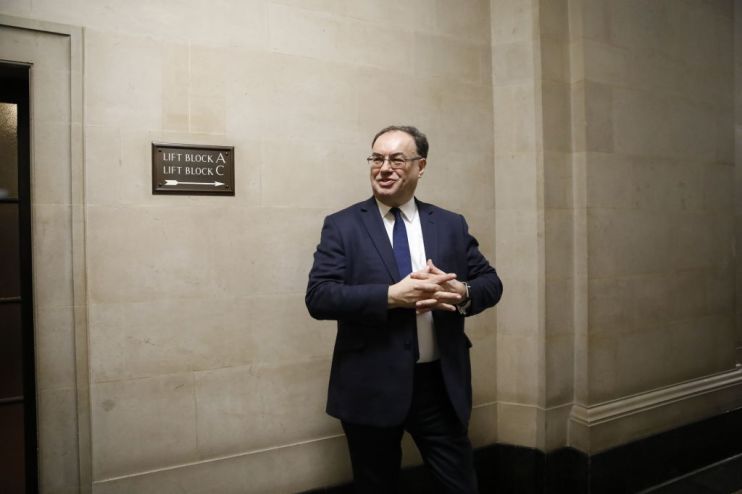BoE puts negative interest rates in its ‘toolbox’ for the first time

The Bank of England has put negative interest rates in its “toolbox” of possible monetary policy measures for the first time, governor Andrew Bailey said today.
However, Bailey cautioned that the Bank does not currently “have a plan to use them”.
Read more: Bank of England says UK economy’s recovery will take longer than expected
It came as the Bank left interest rates on hold at their current record-low level of 0.1 per cent.
Negative rates would mean lenders that keep their money in the Bank of England’s virtual vaults would have to pay interest to do so, in an inversion of the usual system.
A few central banks, such as the European Central Bank (ECB), currently use them in an effort to get banks to lend out their spare cash and boost the economy.
Bailey announced that negative interest rates were under “active review” for the first time in May.
The Bank of England today concluded that they may be useful in some situations. They have therefore been added to the “toolbox” of measures the BoE has at its disposal.
Speaking to journalists, Bailey said: “This is, I think, the first time the Bank of England has said definitively, yes they’re in the toolbox.”
But he added: “We don’t have a plan to use them at the moment.”
Negative interest rates ‘more effective in an upswing’
As part of its review, the Bank of England has analysed the experiences of central banks that have turned to negative rates.
Bailey today said that no country has passed on sub-zero rates to everyday “retail” savers.
He added: “So the larger the share of retail deposits in your banking system funding, obviously it follows from that the more attenuated the effect would be. And the UK does have a high share of retail deposits [in its bank funding].”
He also said: “There’s a bit of evidence… that probably they’re more effective in an established upswing than they are in a rather difficult downswing.”
The Bank of England slashed interest rates to their current record lows in March. A cut in interest rates lowers borrowing costs throughout the economy and hopefully drives up lending and spending.
Bailey said there is no “hierarchy of the things we’d sort of tick off before doing negative rates”.
He said the Bank could do more “quantitative easing” bond-buying. Or it could change its “forward guidance” to reassure markets that rates would stay lower for longer.
Read more: What are negative interest rates and will the UK turn to them?
David Riley, chief investment strategist at Bluebay Asset Management, said he thought the Bank’s announcement showed it has “has cooled on the idea of negative interest rates”.
“More stimulus is likely to take the form of more purchases of gilts and measures to support bank lending.”
Lenders wary of sub-zero rates
The Bank of England could face opposition from lenders over negative interest rates, however.
They lower the so-called “net interest margin” – the difference between the cost of borrowing and the cost of lending – through which lenders make money. And they also cost banks the interest on their deposits.
Negative interest rates could also hurt savers by reducing the amount of interest they gain on their deposits. ECB President Mario Draghi was depicted as a blood-sucking vampire in the German tabloids for damaging the country’s savers.
The announcement on negative interest rates came as Threadneedle Street produced a more upbeat view of the path of the economy this year. It said it would contract by 9.5 per cent compared to an earlier estimate of 14 per cent.
Yet it said the recovery would take longer than initially expected as lower demand and business investment weigh on growth.